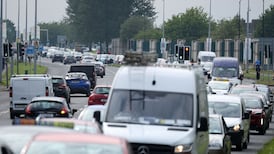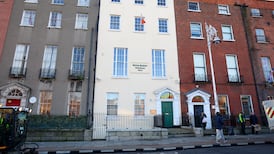Wildfowling, whether you like it or not, is part of our heritage. More than 100,000 people support the sport in the Republic, and nearly 50,000 in the North.
For those older than 50 and from rural backgrounds - and for many in the midlands - there was a very practical purpose to the pursuit. In those days, hunters shot for the pot, to provide a break from the terrible monotony of Irish food. Man cannot live by spuds and cabbage alone.
In the days before myxomatosis in rabbits, their flesh was the only fresh meat available to a people without money or refrigeration.
The humble rabbit was fulfilling its original purpose because folklore has it that the rabbit was brought into Ireland by the Normans as a food source.
In winter, when migratory birds arrived from the Arctic, people hunted wigeon, teal, pochard, mallard, greylag and Greenland white-fronted geese.
On wetlands, men shot the weaving snipe or in the woods chased the woodcock. All through the year, wood pigeons were hunted.
On the bogs, hunters chased grouse or climbed mountains to shoot Ireland's oldest bird which spends all its life on heather. Its flesh made a welcome change from boiled bacon and for some people it was their only source of meat as many were so poor they lived on vegetables alone.
The wild birds were not just eaten. The down from ducks and geese was used to make eiderdowns for beds and the wings of larger birds were used as dusters.
The feathers from the beautiful little teal were much sought after by fly fishermen and commanded a high price. Many of the wings were exported to London.
Fat from geese was used to make candles and some was kept for use as an ointment for burns. Goose fat was also used to cure sprains or other aches and pains.
During the spring, shooting people kept rooks and crows from infant crops and kept the fox at bay to protect baby lambs.
And when the predatory pike began to breed in rivers and lakes, hunters learned that they could also shoot them. Some of the biggest pike taken from Irish waters were shot in shallow waters during the breeding season.
Most of the shooting rights in the country were owned and controlled by big landlords and this led to much conflict between them and locals.
Historical records are littered with references to thousands of people who were imprisoned or transported for poaching the landlord's game.
Some landlords were involved in tourism and rented shooting lodges to visiting tourists. That tradition continues to this day.
The conflict which recently emerged in the courts and culminated in the introduction of new legislation to cover the issuing of licences to tourist hunters has its roots in the 1960s.
That was when the National Association of Regional Game Councils was formed to organise shooting in the Republic. Ironically, one of its original roles was to encourage shooting as a tourist attraction.
Relations between the NARGC and government soured in the 1970s when the government ceased paying grants to the organisation for the rearing of game birds.
The gun clubs became very independent and organised their own finances - even their own insurance fund - and there was constant conflict with the authorities.
The NARGC considered it unfair that the strict licensing standards set by the Government for locals was not being applied to visitors who could apply and, without scrutiny, be given an unlimited hunting licence for the duration of their stay.
The Supreme Court accepted their view and the Government has been forced to push through legislation covering tourist shooters.
The NARGC estimated in a recent report that their members contributed £21 million each year to the economy through their activities.
All fields sports, which would include the sport horse-breeding industry, hunting with packs, foot harrier packs and deer hunting, contributed more than £102 million to the national economy in 1995.







